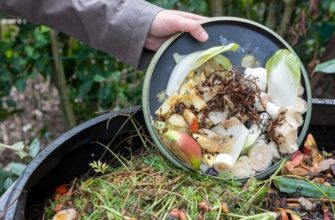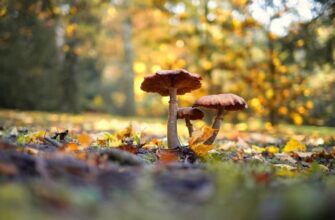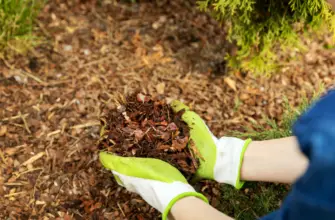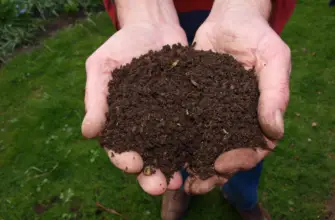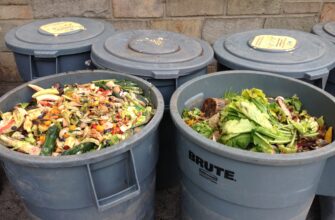How to grow lion’s mane mushrooms? Ever wanted to learn how to grow lion’s mane mushrooms? Not just any mushrooms, but beautiful lion’s mane mushrooms that look like cascading waterfalls of white? Well, now you can with this easy guide to cultivating your own lion’s mane mushrooms at home.
Lion’s mane mushrooms, also known as bearded tooth or pom-pom mushrooms, are edible fungi that have a seafood-like flavor and texture. Beyond their unique taste and appearance, lion’s mane mushroom has been shown to have compounds that may boost brain health and stimulate nerve growth.
While they can be found in some specialty grocery stores, the freshest way to enjoy these delicious mushrooms is to grow your own. With some basic equipment and a little patience, you’ll be harvesting a crop of lush lion’s mane in no time.

- About lion’s mane mushrooms
- Gathering your supplies
- Preparing a spawn bag
- Incubate the bags
- Monitoring conditions
- Preparing a fruiting lions mane
- Maintaining optimal conditions
- Temperature
- Humidity
- Light
- Fresh airflow
- Moisture
- Harvesting your mushrooms
- Look for mature mushrooms
- Twist or cut
- Rinse and refrigerate promptly
- Additional flushes
- FAQ
- How long does it take to grow lion’s mane mushrooms?
- Does lion’s mane need sunlight to grow?
- Can you grow lion’s mane mushrooms at home?
- Conclusion
About lion’s mane mushrooms
Lion’s mane is one of the most commonly cultivated mushrooms. With their shaggy, cascading mane and meaty texture, it’s no wonder why. If you want to grow these beauties yourself, here are a few things you should know about growing lion’s mane indoors:
- Lion’s mane, also known as bearded tooth or pom-pom mushrooms, are saprotrophs, meaning they feed on dead and decaying organic matter. They prefer hardwood logs like oak, maple, and beech.
- To get started, you’ll need grain spawn, sawdust, and a container. The lion’s mane spawn contains the mycelium, or mushroom roots. Lion’s mane mycelium is very fine in comparison to other commonly grown gourmet mushrooms like oyster mushrooms.
- Mix it with sawdust in a container with holes for airflow. Keep the container in a shady area away from direct sunlight.
- Mist your lion’s mane kit regularly and keep the sawdust moist but not soggy. The grow lions mane mycelium needs humidity and moisture to spread. After a few weeks, you should see the shaggy lion’s mane grain spawn emerge from the holes in the container.
- Once the mushrooms are 3 to 4 inches wide, twist or cut them off. Enjoy your harvest immediately, as wild lion’s mane mushrooms have a short shelf life. Simply sauté them in butter or olive oil and serve them on their own, in risotto, or on pizza. Their flavor is often described as crab or lobster-like.
With the right conditions, you’ll be enjoying homegrown fresh lion’s mane mushrooms in no time. Not only are they delicious, but they may even boost your brain health and cognition. Now that is a lion’s mane mushroom, something worth cultivating!

Gathering your supplies
To grow lion’s mane mushrooms, you’ll need to gather some essential supplies.
First, you’ll need spawn, which is essentially a mushroom seed. You can find mushroom spawn from specialty mushroom supply stores. Get a bag with a filter patch, not a syringe.
Next, grab some more hardwood trees with fuel pellets, like oak or beech. You’ll also want a bag of hydrated lime and some gypsum. This helps adjust the pH and provide nutrients for growing lion’s mane.
You’ll also need a container, like a plastic tub or bucket with a lid. Make sure it’s food-grade. And get perlite, vermiculite, or straw to use as a casing layer.
For tools, get a spray bottle to mist your growing lion’s mane, a hygrometer to monitor humidity, a fan, a timer, and a temperature gauge. Lion’s mane mushroom thrives around 65-70 °F.
With the right supplies and a sterile environment, you’ll be well on your way to cultivating the king. The next step is preparing your lion’s mane mushroom substrate and spawn. But before you do, give your supplies a once over and make sure you have everything. Growing lion’s mane mushrooms requires patience, so you want to get it right the first time!
Preparing a spawn bag
To prepare a spawn bag for growing lion’s mane mushrooms, you’ll need some basic supplies.
Gather your supplies
- Spawn bags (also called mushroom grow bags): these are bags specifically designed for growing lion’s mane mushrooms. They have built-in filters that allow for gas exchange while keeping contaminants out.
- Lion’s mane mushroom spawn: this is the material that will produce the mushrooms. It contains live mycelium, which are the thread-like roots of fungi.
- Substrate: for lion’s mane mushrooms, hardwood sawdust or wood chips work well. They provide nutrients for growing lion’s mane mycelium.
- Gypsum (calcium sulfate): adding gypsum helps adjust the pH and provides sulfur, which helps the lion’s mane grow.
- Bran or straw: adding a bit of bran or straw provides extra nutrients and helps the mycelium colonize the substrate.
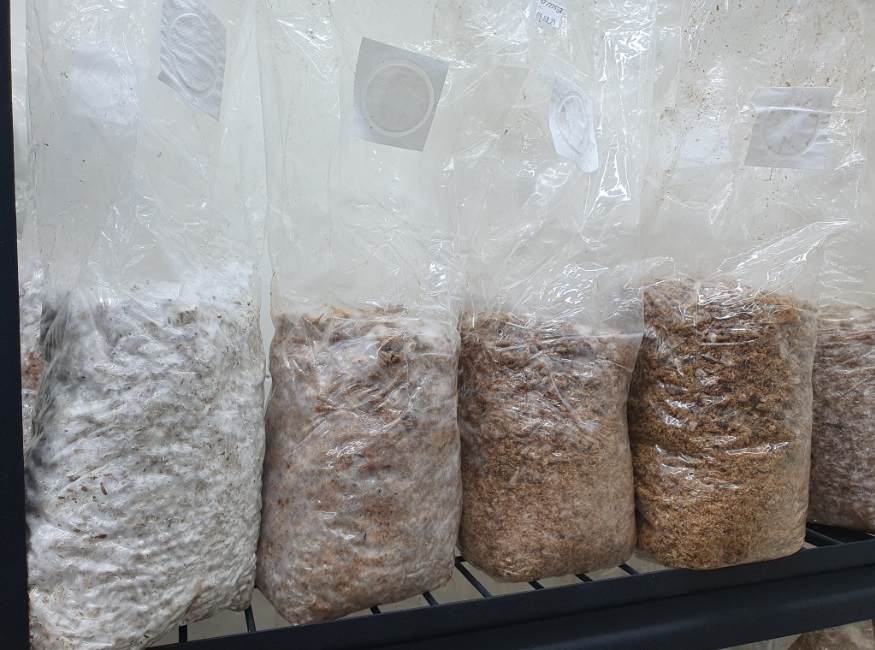
Prepare the substrate
Mix the sawdust, gypsum, and bran or straw in a container until well combined. For every 5 pounds of sawdust, add 1/2 cup of gypsum and 1 cup of wheat bran each. Moisten the mixture with water until it reaches the consistency of a damp sponge—not soggy but not dry.
Fill and seal the bag
Place the substrate into your spawn bags, filling each bag about 2/3 full. Seal the bags according to the package directions, leaving the filter patch exposed.
Add the spawn
Make several holes in the top of the sealed spawn bags to allow gas exchange. Add the lion’s mane spawn through these holes, distributing it evenly over the surface of the substrate.
Incubate the bags
Place the spawn bags in a warm area away from direct sunlight. An ideal temperature range is 65 to 72 °F. Over 4 to 6 weeks, the mycelium will spread throughout the substrate, turning it white. Once fully colonized, you can fruit your lion’s mane mushrooms. With the right care and conditions, you’ll have a successful harvest of this delectable fungi.
Incubating the spawn bag
Once your lion’s mane mushroom spawn has been prepared, it’s time to incubate the spawn bag. This step is crucial for initiating growth before the spawn is ready to be transferred to a fruiting chamber.
Selecting a location
Choose a spot in your home that maintains temperatures between 65 to 72 °F. The ideal location is a closet, cabinet, or box—somewhere dark and undisturbed.
Preparing the bag
Make several holes in the spawn bag to allow for gas exchange. Use a sterilized needle or pin to puncture around 10 to 15 holes in the bag.
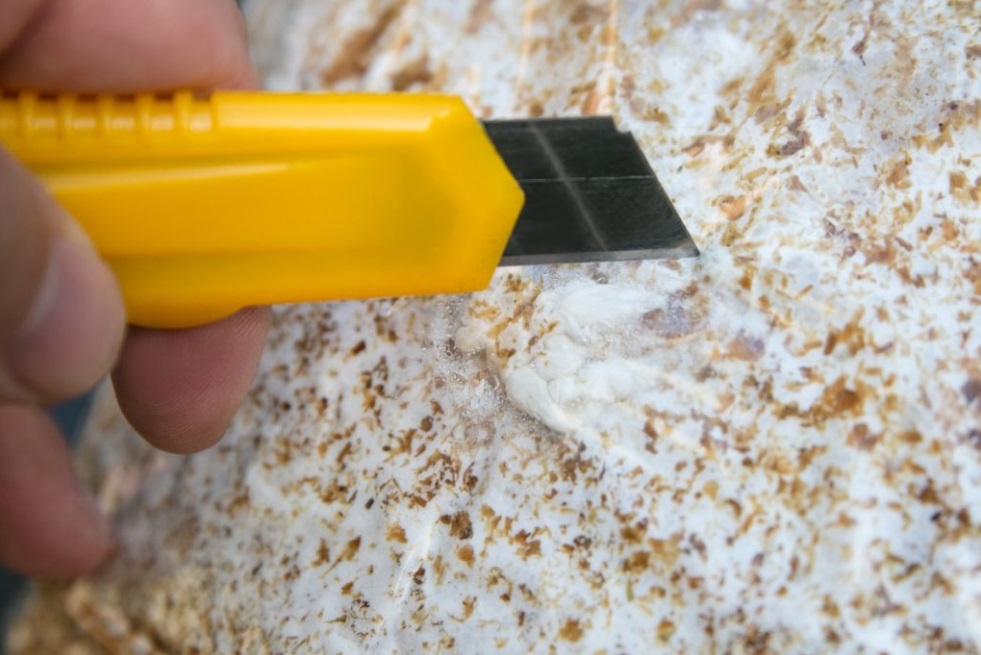
Monitoring conditions
Check on your spawn bag once a week. Gently feel for hardness around the holes and sides of the bag—this indicates the mycelium is colonizing the grain. After 2 to 4 weeks, the bag should feel firm all over. At this point, the spawn is ready to be transferred to a fruiting chamber.
- If there are any soft, mushy spots, this could indicate contamination. Discard the bag immediately.
- Make sure the bag remains properly sealed except for the holes. Any tears or unsealed areas provide entry points for contaminants.
- Don’t be alarmed if you see condensation—this is normal. Just ensure the bag is not soaked or sitting in pooled water.
With the right conditions, your lion’s mane spawn will flourish into a dense white mass, signaling it’s ready to fruit. Providing the essentials—fresh air, steady temperature, and darkness—will get your spawn off to a great start. In a few short weeks, you’ll have a mushroom growing up before your eyes.
Patience and care in these early stages of medicinal mushroom, will reward you with a bountiful harvest.
Preparing a fruiting lions mane
Once your lion’s mane mushroom culture is fully colonized, it’s time to prepare a fruiting chamber, so it can produce mushrooms. A fruiting chamber provides the ideal environment for your younger lion’s mane mushrooms to grow into maturity.
Selecting a container
Choose a container that is at least 18 inches deep and wide. A plastic storage bin, bucket, or tub works well. Make sure there are no holes in the bottom of the container.
Add perlite
Fill the bottom of your container with 3 to 4 inches of perlite, vermiculite, or a similar moisture-retaining substrate.
Introduce fresh air
Your mushrooms need oxygen to grow, so you’ll need to ventilate the chamber. Cut or drill 1/2-inch holes in the lid, spaced about 6 to 8 inches apart.
Maintain ideal conditions
Place your colonized culture in the fruiting chamber on top of the perlite. Mist the sides and lid of the chamber to raise the humidity.
The ideal conditions for lion’s mane mushroom growing are:
- humidity: 95-100%
- temperature: 65-70 °F
- light: indirect sunlight or fluorescent light
Check on your mushrooms daily and mist them with water as needed to keep the perlite damp and humidity high. Fresh air exchange is also important, so fan the chamber for a few minutes each day to prevent excess CO2 buildup.
In 7 to 14 days, you should see mushrooms beginning to form. Once the mushrooms are fully grown, harvest them by twisting or cutting them off at the base.
With the right conditions, your lion’s mane mushrooms will thrive in the fruiting chamber. Pay close attention to humidity, temperature, and fresh air to have a successful harvest of this delicious and nutritious mushroom.
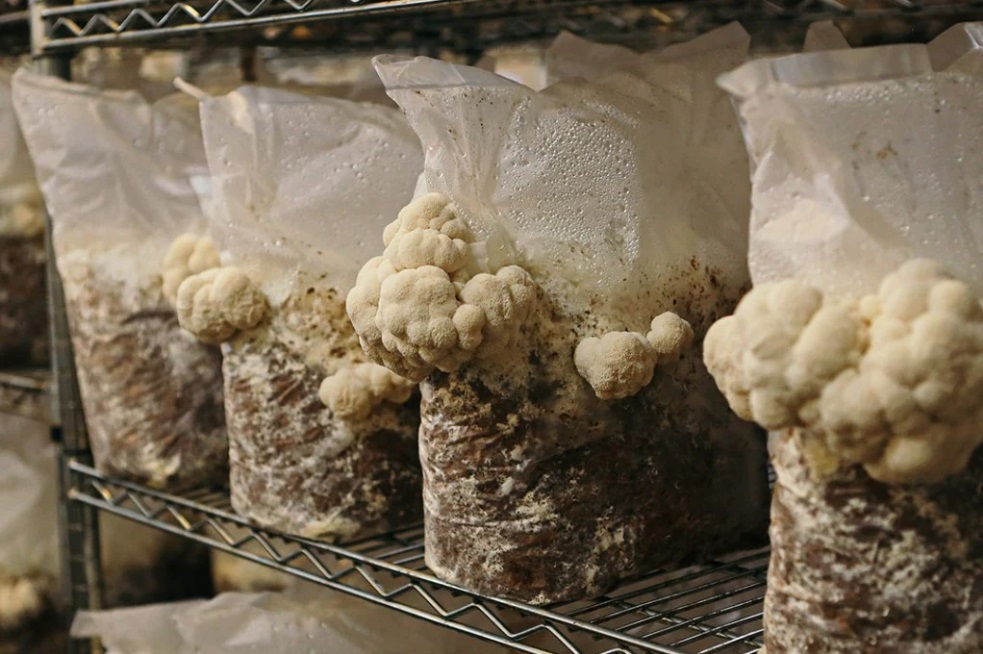
Maintaining optimal conditions
Once the lion’s mane mycelium has fully colonized the grain spawn bag, it’s time to transfer it to a fruiting chamber, so it can produce mushrooms. This is an exciting step, as you’ll soon be able to harvest your own homegrown fresh lion’s mane mushroom!
To keep your lion’s mane mushroom growing, maintaining the proper conditions is key. These fungi can be particular about their environment, so check on them regularly and make adjustments as needed.

Temperature
Lion’s mane mushrooms grow best in cool temperatures, between 55 and 65 °F. Place your kit in a spot that stays in this range, like a basement or garage. Fluctuating or overly warm temperatures can stress the mycelium and reduce yields.
Humidity
High humidity, around 95%, is ideal for lion’s mane mushroom cultivation. You can increase the humidity around your kit in several ways:
- Mist your kit with a spray bottle a few times per day.
- Place the kit on top of pebbles with some water added to increase ambient humidity.
- Cover the kit with a humidity tent, like a clear plastic bag with some holes cut in it.
Light
While lion’s mane mushrooms don’t need light to grow, some indirect light will help the mushrooms develop their characteristic mane-like shape. Place the kit near a window that doesn’t get direct sun. Artificial light can also be used if natural light is limited.
Fresh airflow
Although humidity should be kept high, stagnant air should be avoided. Lion’s mane mushrooms require fresh airflow for healthy growth. Place your kit in a spot with some gentle air circulation and fan it for a few minutes a day.
Moisture
The growing medium should be kept moderately moist but not soggy. Check on your kit daily and mist with water when the top layer becomes dry to the touch. Water in a spray bottle is best, so you can control the amount. Overwatering can lead to contamination.
Providing the proper temperature, humidity, light, airflow, and moisture will give your lion’s mane mushrooms the optimal conditions they need to produce a successful harvest. With regular maintenance and care, you’ll have a fresh lion’s mane event in no time!
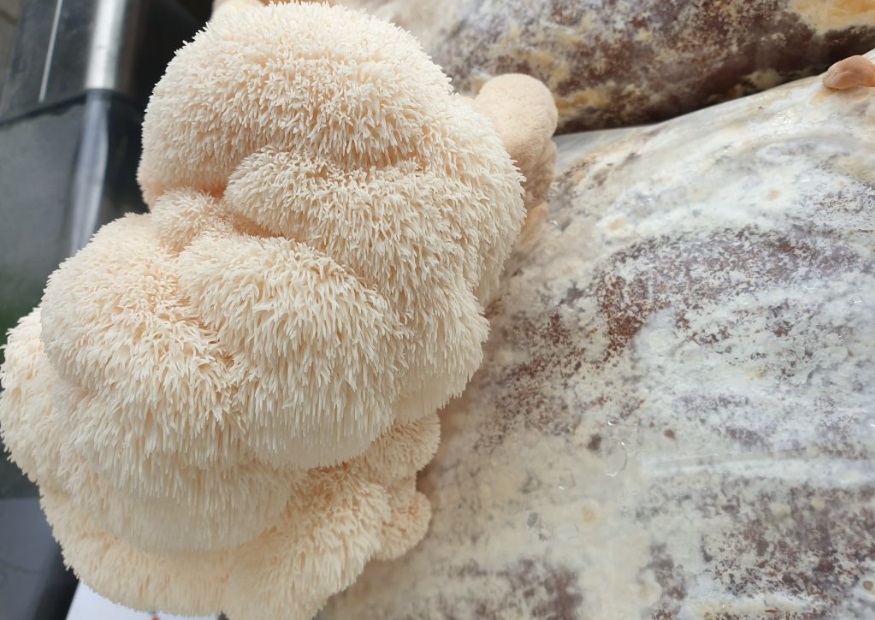
Harvesting your mushrooms
Once your lion’s mane mushrooms have fully colonized the substrate and started pinning, it’s time to harvest! Harvesting at the right time is key to getting the best yield and flavor when harvesting lion’s mane mushrooms.
Look for mature mushrooms
Check your lion’s mane mushrooms daily as they near maturity. Look for mushrooms with caps that have flattened out and edges that have started to curl under. The mushroom should feel firm and plump.
If the mushroom cap is still rounded on top, it’s not quite ready. Lion’s mane mushrooms grow very quickly, so they can go from immature to overripe in just a day or two.
Twist or cut
The best way to harvest lion’s mane mushrooms is by twisting or cutting them with a sharp knife off at the base. Twisting the mushroom off with a gentle tug is ideal, as it leaves behind the mycelium in the substrate, so it can continue the mushroom growing.
Rinse and refrigerate promptly
Gently rinse your harvested lion’s mane mushrooms under cold running water to remove any debris. Pat them dry with a paper towel or cloth. Place them in a paper bag or perforated plastic bag, and refrigerate promptly. Stored properly in the refrigerator, lion’s mane mushrooms will last 7 to 10 days before spoiling.
Additional flushes
With the initial harvest complete, your lion’s mane mushroom kit or hardwood logs should produce 2-3 more flushes of fresh lion’s mane mushrooms over the next few months. Continue to mist and fan as before, and dunk kits in water if they start to dry out.
The next flush may start pinning just a week after harvesting, so keep a close eye on your lion’s mane mushrooms. With each flush, the yield may decrease but the mushrooms will get larger. Enjoy your homegrown lion’s mane mushrooms!
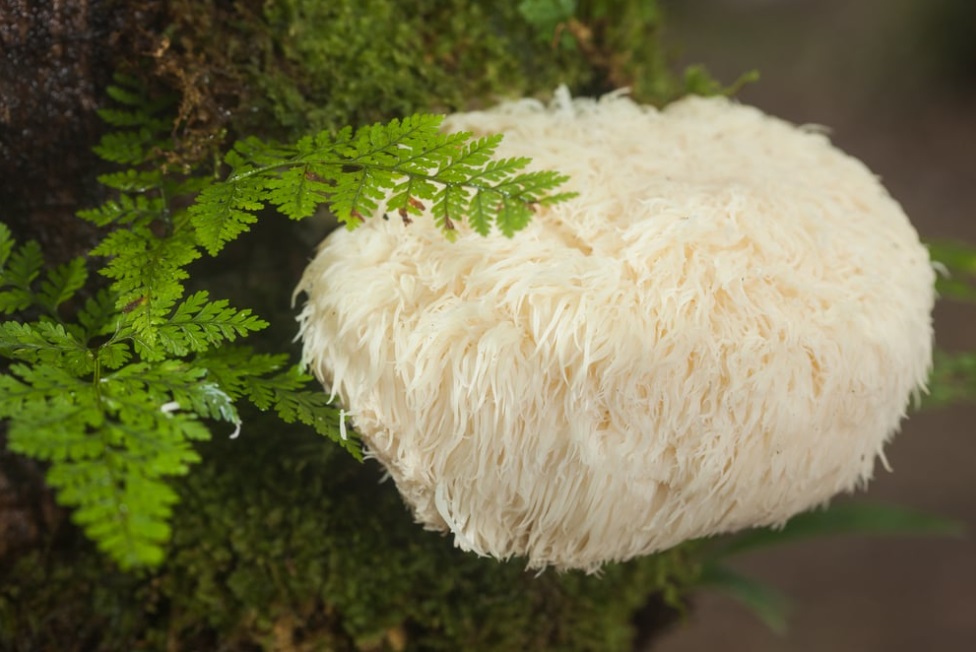
FAQ
How long does it take to grow lion’s mane mushrooms?
It will be cultivated within 6-12 weeks after inoculation. Growing lion’s mane in bags is debatably the easiest option for beginners, and it’s advisable if you already have a bit of experience growing lion’s mane mushrooms.
Does lion’s mane need sunlight to grow?
The lions mane mushroom grows best when it is warm and without direct sunlight, and has plenty of humidity with minimal circulatory capacity. It’s important to find and create a proper environment to grow lion’s mane mushroom. Place your box in a sunny spot.
Can you grow lion’s mane mushrooms at home?
You can grow lion’s mane in an enclosed space or in spare rooms in the basement. In small apartments, they can be grown in shotgun-shaped fruiting chambers.

Conclusion
So, there you have it, everything you need to know how to grow lion’s mane mushrooms at home. While growing mushrooms do require patience and the willingness to get your hands a little dirty, the rewards of harvesting your own mushrooms and enjoying their unique taste and texture will make all the effort worthwhile.
Before you know it, you’ll be a mushroom cultivation pro and whipping up all kinds of recipes to showcase your homegrown lion’s mane.
What are you waiting for? Get out there and get started – your mushroom kingdom awaits! May your cultivation be fruitful, and your harvests be bountiful. Happy mushroom-growing journey, everyone!
Are you interested in learning more on how to grow lion’s mane mushrooms? We recommend you to read an article on this subject. Just follow the link and check it out.



